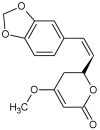A Pivotal Role of Nrf2 in Neurodegenerative Disorders: A New Way for Therapeutic Strategies
- PMID: 35745610
- PMCID: PMC9227112
- DOI: 10.3390/ph15060692
A Pivotal Role of Nrf2 in Neurodegenerative Disorders: A New Way for Therapeutic Strategies
Abstract
Clinical and preclinical research indicates that neurodegenerative diseases are characterized by excess levels of oxidative stress (OS) biomarkers and by lower levels of antioxidant protection in the brain and peripheral tissues. Dysregulations in the oxidant/antioxidant balance are known to be a major factor in the pathogenesis of neurodegenerative diseases and involve mitochondrial dysfunction, protein misfolding, and neuroinflammation, all events that lead to the proteostatic collapse of neuronal cells and their loss. Nuclear factor-E2-related factor 2 (Nrf2) is a short-lived protein that works as a transcription factor and is related to the expression of many cytoprotective genes involved in xenobiotic metabolism and antioxidant responses. A major emerging function of Nrf2 from studies over the past decade is its role in resistance to OS. Nrf2 is a key regulator of OS defense and research supports a protective and defending role of Nrf2 against neurodegenerative conditions. This review describes the influence of Nrf2 on OS and in what way Nrf2 regulates antioxidant defense for neurodegenerative conditions. Furthermore, we evaluate recent research and evidence for a beneficial and potential role of specific Nrf2 activator compounds as therapeutic agents.
Keywords: ALS; Alzheimer’s disease; Huntington’s disease; Nrf2; Parkinson’s disease; antioxidant; neurodegenerative; oxidative stress.
Conflict of interest statement
The authors declare no conflict of interest.
Figures














Similar articles
-
The role of Nrf2 signaling pathways in nerve damage repair.Toxicol Res (Camb). 2024 May 23;13(3):tfae080. doi: 10.1093/toxres/tfae080. eCollection 2024 Jun. Toxicol Res (Camb). 2024. PMID: 38799411 Free PMC article. Review.
-
Modulation of mitochondrial dysfunction in neurodegenerative diseases via activation of nuclear factor erythroid-2-related factor 2 by food-derived compounds.Pharmacol Res. 2016 Jan;103:80-94. doi: 10.1016/j.phrs.2015.11.019. Epub 2015 Nov 25. Pharmacol Res. 2016. PMID: 26626189 Review.
-
Role of Nrf2 in aging, Alzheimer's and other neurodegenerative diseases.Ageing Res Rev. 2022 Dec;82:101756. doi: 10.1016/j.arr.2022.101756. Epub 2022 Oct 13. Ageing Res Rev. 2022. PMID: 36243357 Review.
-
Ferroptosis regulation through Nrf2 and implications for neurodegenerative diseases.Arch Toxicol. 2024 Mar;98(3):579-615. doi: 10.1007/s00204-023-03660-8. Epub 2024 Jan 24. Arch Toxicol. 2024. PMID: 38265475 Free PMC article. Review.
-
Nrf2/ARE Signaling Pathway: Key Mediator in Oxidative Stress and Potential Therapeutic Target in ALS.Neurol Res Int. 2012;2012:878030. doi: 10.1155/2012/878030. Epub 2012 Sep 20. Neurol Res Int. 2012. PMID: 23050144 Free PMC article.
Cited by
-
The Effect of Phytocannabinoids and Endocannabinoids on Nrf2 Activity in the Central Nervous System and Periphery.Neurol Int. 2024 Jul 18;16(4):776-789. doi: 10.3390/neurolint16040057. Neurol Int. 2024. PMID: 39051218 Free PMC article. Review.
-
Interplay between oxidative stress, neuroinflammatory cytokines and melatonin in Alzheimer's disease: Insights from cerebrospinal fluid analysis.Heliyon. 2025 Jan 13;11(2):e41841. doi: 10.1016/j.heliyon.2025.e41841. eCollection 2025 Jan 30. Heliyon. 2025. PMID: 39897852 Free PMC article.
-
The Role of the NRF2 Pathway in Maintaining and Improving Cognitive Function.Biomedicines. 2022 Aug 21;10(8):2043. doi: 10.3390/biomedicines10082043. Biomedicines. 2022. PMID: 36009590 Free PMC article. Review.
-
Electrophilic Compounds in the Human Diet and Their Role in the Induction of the Transcription Factor NRF2.Int J Mol Sci. 2024 Mar 20;25(6):3521. doi: 10.3390/ijms25063521. Int J Mol Sci. 2024. PMID: 38542492 Free PMC article. Review.
-
Zinc Ameliorates Acrylamide-Induced Cognitive Impairment in Male Wistar Rats: Modulation of Oxidative Stress, Neuro-inflammation, and Neurotrophic Pathways.Biol Trace Elem Res. 2025 Aug;203(8):4273-4282. doi: 10.1007/s12011-024-04490-0. Epub 2024 Dec 17. Biol Trace Elem Res. 2025. PMID: 39688764
References
-
- Reynolds A., Laurie C., Mosley R.L., Gendelman H.E. Oxidative stress and the pathogenesis of neurodegenerative disorders. Int. Rev. Neurobiol. 2007;82:297–325. - PubMed
-
- Moretti D., Tambone S., Cerretani M., Fezzardi P., Missineo A., Sherman L.T., Munoz-Sajuan I., Harper S., Dominquez C., Pacifici R., et al. NRF2 activation by reversible KEAP1 binding induces the antioxidant response in primary neurons and astrocytes of a Huntington’s disease mouse model. Free Radic. Biol. Med. 2021;162:243–254. doi: 10.1016/j.freeradbiomed.2020.10.022. - DOI - PubMed
Publication types
LinkOut - more resources
Full Text Sources
Miscellaneous

